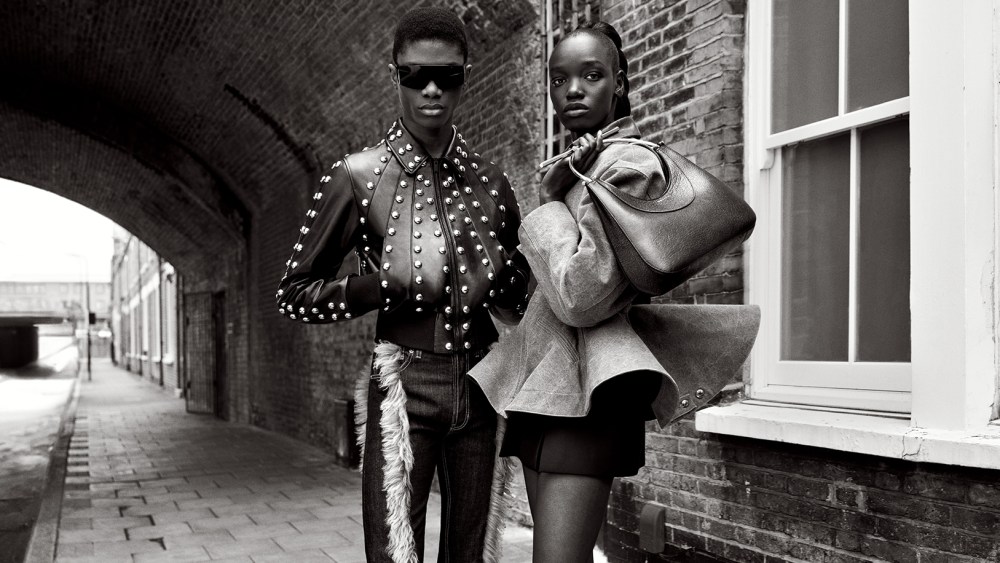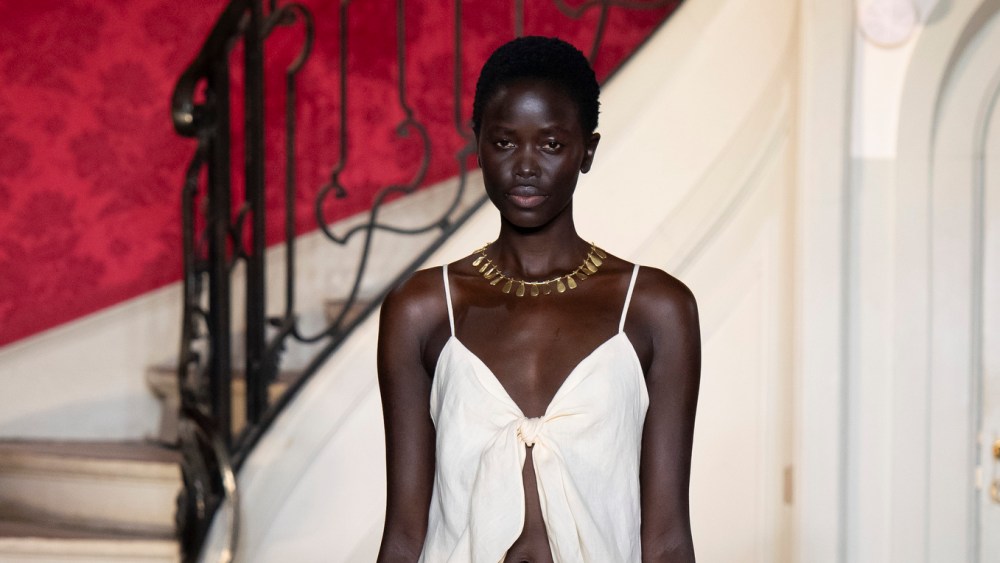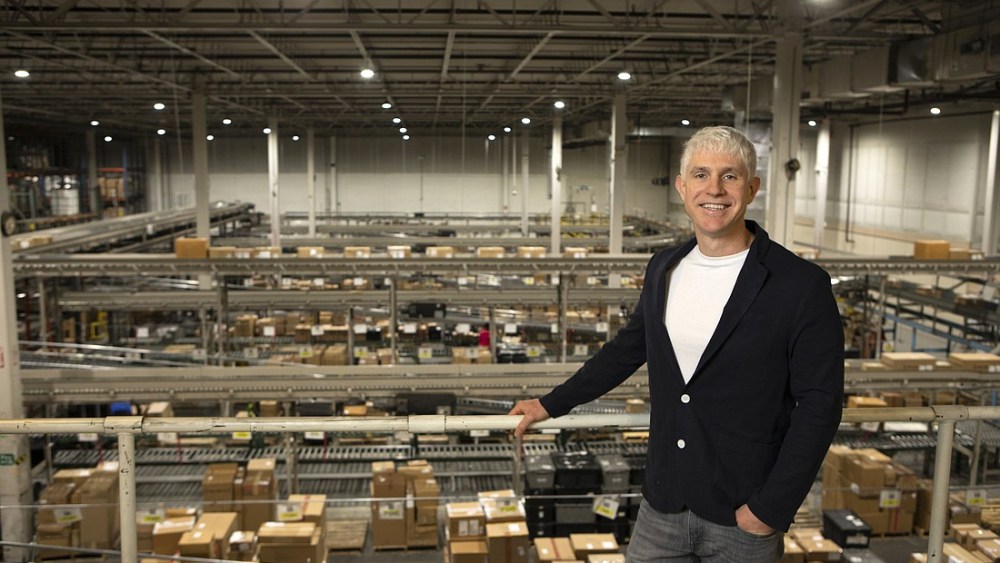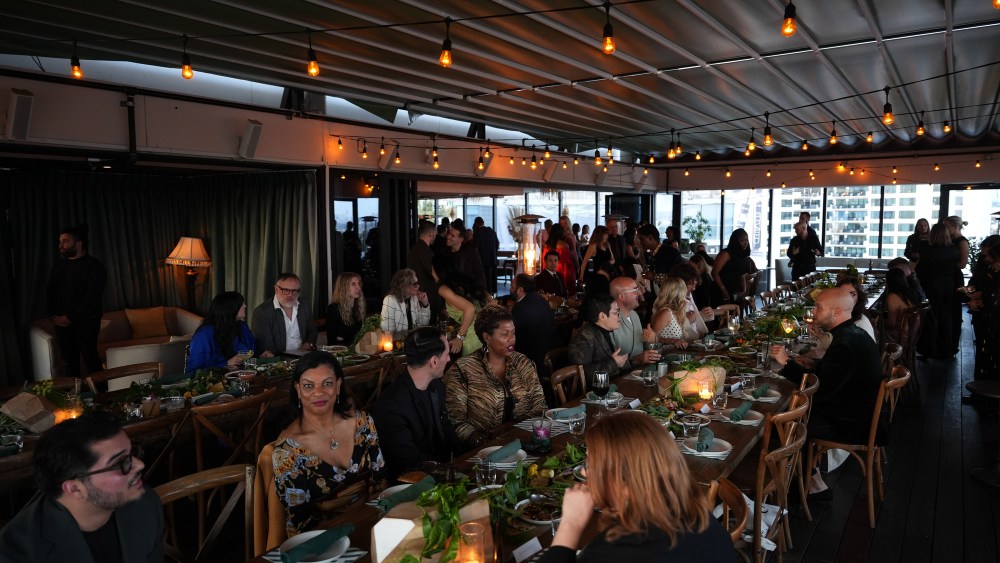LONDON — Is fashion in a great depression?
Judging by the fall 2024 campaigns across billboards and advertising pages in magazines, there seems to be a missing human element — a smile.
A blank stare into the camera has become contagious in recent campaign images: An eeriness in Sean McGirr’s first campaign for Alexander McQueen; a confrontational stare from Cara Delevingne for Miu Miu; no sense of being or direction in Peter Hawkings’ Tom Ford, and a group staring contest from Loro Piana.

“First of all, it’s not a new phenomenon. In the ‘70s and even early ‘80s, often models were smiling and dancing down the runway — then they became very stern and sort of robot-like for the most part, but in fashion advertising, this was even more conspicuous,” said Valerie Steele, the director of the Museum at the Fashion Institute of Technology.
You May Also Like
The visual language of advertising has stayed the same for eons now and it’s become an indicator of whether or not something is desirable.
Steele adds that the dynamic is perfectly depicted in the film “Triangle of Sadness,” when a casting director asks a group of male models to “show me that Balenciaga look” and they all squint and pout. But when he says, “I think it’s back to H&M again,” the models laugh, grin and shift closer.
“We’re so cheap, we’re so happy!” the casting director exclaims.
“For advertisers trying to appeal to the public, smiley models mean cheap and accessible stuff, [whereas being] somewhat serious or grim looking equals ‘this is important, avant-garde, high-status fashion and we’re taking it seriously.’ It’s not that it’s 100 percent this way, but it’s overwhelmingly indicating that’s what you’re getting and there’s a distinction between them,” Steele added.
While advertising is based on the idea of fantasy, it’s also somewhat trying to root itself in reality.

The empty expressions suggest that the subjects are intending to make a serious investment by putting money down on a leather bag or fur coat, as seen in the Miu Miu campaigns.
In a luxury market that’s experiencing a slump, it’s crucial more than ever to make the customer believe the narrative that they can own the items in the campaigns despite it being distant or unattainable.
“Right now there is huge economic turbulence — fashion houses are looking to new territories, trying to expand or consolidate, they can’t afford not to take things very seriously,” said Terry Newman, author of “Legendary Authors and the Clothes They Wore” and a senior lecturer at Regent’s University London.
Luxury fashion has become a game of tug of war — where businesses are trying to please their one percent clientele, as well as seducing a younger generation in hopes of building a lasting relationship over the next few decades.

“There’s been an unprecedented closeness to luxury brands, fueled by platforms like TikTok, immersive brand experiences, and the introduction of more affordably priced products, but to maintain prestige and justify steep price hikes, these labels also need to preserve an air of exclusivity, through the removal of smiles and a shift away from joy-inducing imagery,” said Isabella Rapp, cofounder of the brand agency Pulp House with Manon Servies.
“The diminishing smiles might also reflect a growing discontent with the influencer market and a weariness of the over-stylized perfection that has dominated for so long,” added Servies.
Between the pensive moods, there are some cracks of a grin.
Bottega Veneta’s fall 2024 campaign shot in Utah and Nevada features two models smiling; Lucy Liu does a high kick in the air for Stuart Weitzman, while Issa Rae smirks at the camera, and Taraji P. Henson grins with a wide-teeth smile for Kate Spade New York with Nicola Coughlan.

Adrian Appiolaza’s first advertising campaign for Moschino nods to the brand’s tongue-in-cheek character with models Julia Nobis, Lina Zhang, Laura R., Farah and Rabina depicting Milanese women enjoying their everyday lives and buying groceries from the local fruit stand, at the record store, or in front of some of the iconic symbols of Milan, such as the Duomo and the ‘50s post-Rationalist and Brutalist Torre Velasca.
The designer makes a subtle cameo in the campaigns himself — iterating that there’s still joy to be found in fashion.
“From the beginning, Franco Moschino was playing with the ideas of jokes and his [campaigns] were so brilliant, like the ‘stop the fashion system!’ and with Jeremy Scott’s [campaigns], you couldn’t help, but smile when looking at them,” said Steele.
Fashion is in an indecisive period — the aftermath of the COVID-19 pandemic had many brands searching for happiness and adapting to it, but as the pandemic becomes a thing of the past, some may want to return to their old, stoic amors.



